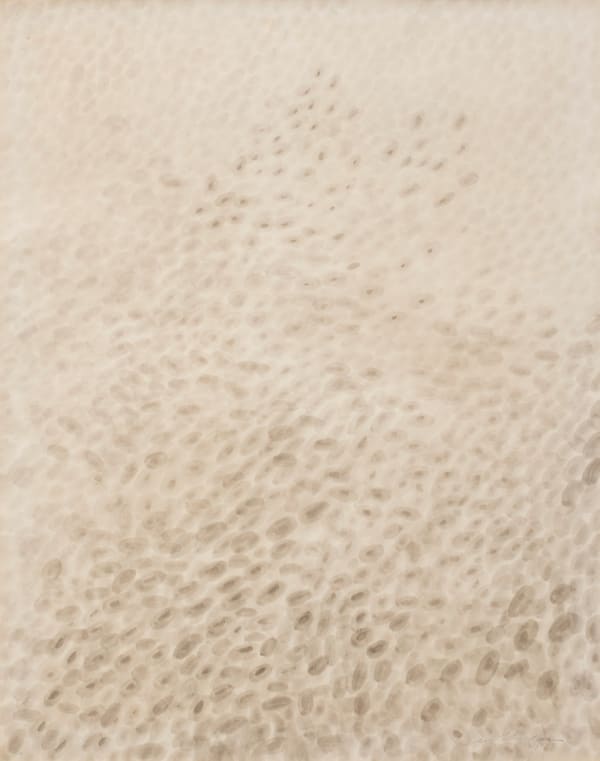Lee Mullican US, 1919-1998
"I had decided full force that I wanted to be an artist, that I wanted to paint, I wanted to draw, I wanted to live that way. I wanted to make something of it, for myself. And I think the drive really began right then. And it's continued, certainly. There was an excitement in being different, in presenting things that had never been seen before, or I'd never seen before, in the way of what one could do with paint--image-making. And I was a part of it."
- Lee Mullican
Reared in the Midwestern suburb of Chickasha, Oklahoma, Lee Mullican was born on December 2, 1919 to Harris Nichols Mullican (1884-1972) and Zula Jolley Mullican (1887-1974). Introduced to art by his mother, an amateur painter, Mullican’s first attempt at painting came with the aid of her art supplies at the age of 15. Satisfying the wishes of his father, he initially enrolled at Abilene Christian College for two years before transferring to the University of Oklahoma for a year. Here he established his first off-campus studio — followed by a brief enrollment at Kansas City Art Institute.
After being drafted into the US Army corps of engineers in 1941, he attended topographic school in Ft. Belvoir, Virginia before being stationed in Hawaii and eventually Japan. With an abundance of available drawing supplies, access to internationally renowned museums, and the influence of art publications such as Wolfgang Paalen’s Dyn, Mullican used his considerable spare time during the war to foster artistic development.
Mullican was invited to San Francisco in 1946 by Jack Stauffacher, a printer whom he had befriended during the war. Here, he devoted most of his time to drawing and, when finances permitted, painting. A Mullican painting hanging in Stauffacher’s printing studio was discovered by the former British Surrealist Gordon Onslow Ford. Immediately taking him under his wing, Onslow Ford introduced Mullican to the members of the San Francisco art community, including Wolfgang Paalen and his wife Luchita Hurtado. Mullican, Paalen, and Onslow Ford quickly formed a collaborative artistic circle, culminating with the exhibition Dynaton in 1951. This group of artists, named after the Greek word for “the possible,” acted as a bridge between the European Surrealist and American Abstract Expressionist schools. Disbanding shortly after its historic exhibition in 1951 at the San Francisco Museum of Modern Art, the Dynaton explored the subconscious mind, mysticism, automatism, and the influences of ancient cultures. Mullican remained true to these ideas but went on to develop his own highly personal imagery.
With Paalen and his wife already divorced by this point, Mullican and Luchita Hurtado began a relationship and moved to Los Angeles after the birth of their son. They subsequently married in 1954. While basing his career mostly in Santa Monica, Mullican traveled alongside his family on multiple occasions.
Mullican’s works are included in the permanent collections of numerous important institutions such as the Museum of Modern Art, New York, the San Francisco Museum of Art, the Metropolitan Museum of Art, the Whitney Museum of American Art, the Museum of Contemporary Art, Los Angeles, the Los Angeles County Museum of Art and the Whitney Museum of Modern Art, among others. Lee Mullican was included in the Getty Museum’s Pacific Standard Time exhibition in 2011.










